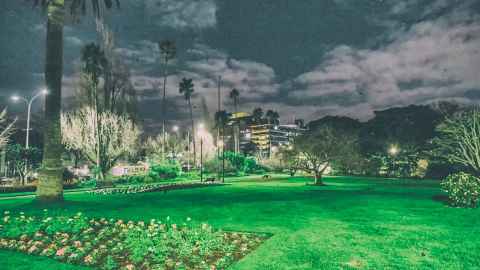Our leafy oases shouldn’t be reserved for the privileged
26 July 2023
Opinion: We need to prioritise green spaces for those who need them the most – those without their own backyard and living in more dense and deprived neighbourhoods, argues I-Ting Chuang

In our bustling urban landscapes, leafy neighbourhoods have become synonymous with grand real estate, streets adorned with established trees, and lush parks nestled among perfectly manicured private yards. But at what point did we find it acceptable that only those of higher socio-economic status could expect a life lived among leafiness, as if poorer people shouldn’t?
Climate change impacts are already evident here in the devastating events such as Cyclone Gabrielle and flooding that our cities have endured this year. Densification may still have its sceptics, but rising above our collective challenges will oblige our cities to adapt and transition towards a more sustainable higher-density urban environment. And that includes taking people's rights to public spaces, especially green spaces, very seriously.
Green spaces have become symbols of tranquillity amid the urban chaos. They could become rarer as densification becomes more of our future, but our leafy oases shouldn’t be reserved for the privileged. Those living in their spacious 600sqm sections have ample private spaces and might not see the need for public green areas, and though parks are meant for everyone, access to them has become an invisible barrier for those who live a long way from them.
Unfortunately, this isn't surprising, especially in Auckland, where higher-density urban developments have often prioritised the maximisation of profits over ensuring a high quality of life for all residents. This is even more apparent in the context of affordable and social housing, where green public spaces are perceived as a luxury, and often disregarded or placed at the bottom of the priority list.
Extensive research has shown that people from disadvantaged backgrounds are at a higher risk of health problems because of their social and economic circumstances, and the lack of access to green spaces in cities is a significant factor contributing to these health disparities. Limited access to green spaces means limited opportunities for physical activity, which can have detrimental consequences, and consequently strain our social and healthcare systems and our collective wellbeing.
If we genuinely care about the wellbeing and health of all members of our communities, if we don’t believe that parks should be the preserve of the affluent, our research should be used to guide our future policies and urban development decisions.
Drive around Auckland and you can see the stark differences in the green spaces available in different neighbourhoods. In Remuera and Mission Bay, beautiful, well-maintained open fields and signs guiding you to lush parks are common. As you move towards the city's periphery, such as Manurewa or Henderson, the landscape changes and the signs of parks gradually disappear amid the concrete pavement.
To better understand this, we conducted extensive research using mobile phone data collected in 2020 to investigate how easily people from public housing neighbourhoods in Auckland can access green spaces, to identify existing disparities in access and use of these vital spaces.
We measured the distance between residents' homes and the nearest park. Our findings provided evidence of the concerning reality – neighbourhoods with higher levels of deprivation had less access to urban green spaces; people living in neighbourhoods with a higher concentration of social housing had a longer way to get to a park compared with areas with minimal social housing. In other words, those living in disadvantaged areas had fewer opportunities to enjoy the numerous benefits parks and nature offer, in stark contrast to residents in more affluent neighbourhoods.
Our research validates what most of us know already and shines a light on a critical issue our city's development has overlooked, possibly deliberately. It's a wake-up call for us to strive for a more equitable urban environment. We need to prioritise green spaces for those who need them the most – those without their own backyard and living in more dense and more deprived neighbourhoods.
If we genuinely care about the wellbeing and health of all members of our communities, if we don’t believe that parks should be the preserve of the affluent, our research should be used to guide our future policies and urban development decisions, ideally to ensure that different types of parks are strategically located to maximise benefits and accessibility for everyone.
It's time to break down the barriers to ensure nature's benefits are within reach of everyone, making our cities more vibrant, inclusive, and resilient for generations to come.
Dr I-Ting Chuang is a lecturer at the School of Architecture and Planning. The research described in this article was co-authored by Jessie Colbert and Dr Katarzyna Sila-Nowicka
This article reflects the opinion of the author and not necessarily the views of Waipapa Taumata Rau University of Auckland.
This article was first published on Newsroom, Our leafy oases shouldn’t be reserved for the privileged, 26 June, 2023
Media contact
Margo White I Research communications editor
Mob 021 926 408
Email margo.white@auckland.ac.nz